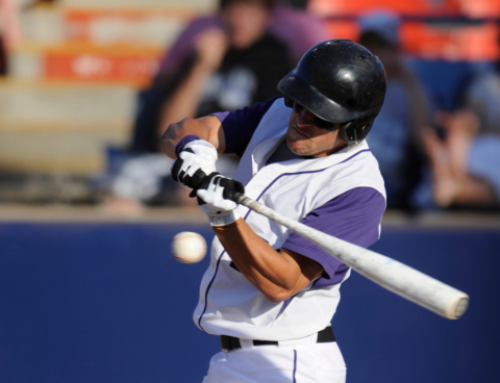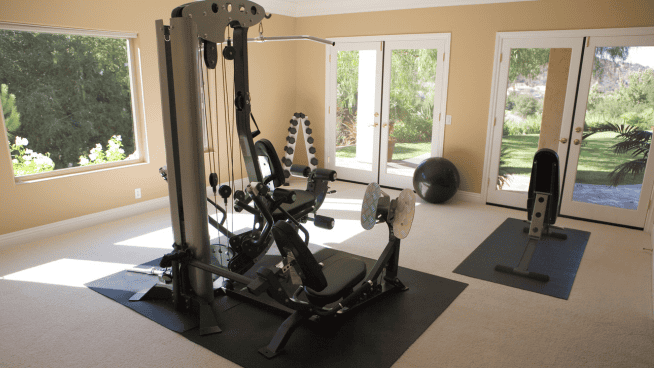How to Run an Effective Youth Baseball Practice
You got your child signed up for youth baseball!
Now they have the chance to learn the sport, be part of a team, and compete with their peers. Just one problem—due to a lack of volunteers, you have been designated as the team’s coach!
One area where new coaches struggle is how to organize their practices. Regardless of the level you coach, you’ll always feel like you don’t have enough time to practice everything you’d like. That’s why it’s important to get the most out of every moment you can during the practice time you are allotted. With that in mind, here are some tips that can help you organize an effective, efficient youth baseball practice.
The Principles of a Good Youth Baseball Practice

Remembering these basic principles can help you ensure great practices no matter what the circumstance.
1. Be Efficient. You need to be organized and have a plan coming in to each and every practice. Strive to maximize not only the amount of time you have, but the amount of field space, as well.
2. Be Prepared for the Unexpected. Youth baseball is not professional baseball. That means certain players or assistant coaches may miss practice, and do so while giving you little or no advanced warning. You can’t allow these sort of hiccups to totally destroy your practice.
3. Find Help. You’re going to need help if you want to run really effective practices. You simply cannot do everything yourself. I’ve found it’s best to divide up responsibilities among assistant coaches or helpers, such as designating a pitching/catching coach, a hitting coach and a fielding coach. In addition, you’ll ideally have first/third base coaches for every game. This will help your players get comfortable with receiving instruction or signals from them during the game, which will be a crucial part of their baseball experience as they get older.
4. Get Everyone on the Same Page. This goes for coaches, parents and players. You have to set the tone with your very first communication to the team. If you want to field a competitive team and help these kids have a positive experience where they end the season as a better player than they started, you need to make those goals clear from day one. Explaining your expectations from the outset will save you a lot of grief down the line. Compiling a basic email chain for all the parents and coaches at the start of the season can also ensure the bureaucratic aspects of running the youth baseball team don’t overwhelm you.
Stations, Situations and Scrimmages

When it comes to running an effective practice, stations are going to be your best friend. By setting up a variety of stations around the field, you allow the players to break up into small groups and rotate through each station. This means more reps and less standing around. Emphasizing hustling between each station can also help build good habits and energy amongst the team. Of course, you can only set up as many stations as you have assistant coaches/volunteers to run them.
What should these stations entail? The exact drills will ultimately be up to you (this list is a great resource of youth baseball drills), but it’s a good idea to diversify the stations by having each address a different baseball skill. For example, let’s say you set up four stations for a practice. Station one can focus on fielding a ground ball and throwing it to a teammate. Station two can focus on catching fly balls or pop-ups. Station three can focus on hitting drills off a tee. Station four can focus on pitching to a catcher. Not only will having every player rotate through these stations help build well-rounded ballplayers, but it will also help you identify which areas certain players seem to excel in, which can help you better put them in position to succeed during games.
I believe your hitting skill work should be done off a tee or via soft toss, as these seem to be the best ways to hone a young player’s fundamentals. I don’t believe in having the coach pitch the ball overhand to kids during practice, as this simply teaches the children to become good hitting off the coach. While that’s all well and good, it can actually be a detriment when it comes to hitting off their peers.
RELATED: How to Teach Youth Baseball Players Proper Hitting Mechanics
For fielding/catching/throwing, this is when you can work on how fielding grounders, fielding fly balls, and delivering accurate throws. These stations work best when a coach can hit the ball to the players, allowing them to get used to the ball speed and path they’ll encounter in game situations.
In addition to skill stations, I like to try to work on one situational moment each practice. This usually takes about 10-15 minutes. These situation moments are meant to allow the players to practice those interesting wrinkles they’ll encounter in real games, such as pick off moves, the catcher throwing to second base, what to do on a dropped third strike, how to execute a rundown, etc. Pick one situation you’d like to focus on each practice. A great way to pick that situation is by choosing something the team didn’t execute very well in the last game. While it’s impossible to drill every situation your team might encounter during a game, getting their feet wet with some of the more common situations can help them be more comfortable during live action.
Beyond station and situational work, I like to end every practice with a scrimmage of some sort. These scrimmages should be as close to game situations as possible. My pitcher throws his warm-up pitches to the catcher. My infielders warm up just like they would prior to an inning in a real game. My hitters come out and take practice swings as the pitcher warms up. I station base running coaches at first and third base. When it times for action, the kids play like it’s a real game, meaning balls and strikes are called. Your players need to get used to hitting off pitchers their age, and your pitchers need to get used to pitching to hitters their age. That means a hitter may draw a walk during the scrimmage, which is okay! It’s all about getting the kids comfortable in a game-like situation, so they’ll be more relaxed when it comes time to do the real thing.
Stations, situations and scrimmages are the three big staples of my youth baseball practices. Having a plan and maximizing your use of time and space will ensure you have extremely effective practices. Remember that no one is playing baseball to hear you talk, they need to be practicing their skills and situations to improve!
And above all, remember it is just a game. These are just kids. Strive to make every youth baseball practice a balance of fun and productive. No one wants to play for a coach who yells and screams—that creates tense players, which creates poor results and sucks the fun right out of the sport. If your players can look back on the season as a positive experience where they improved their skills and became a better teammate, you’ve done your job as a youth sports coach.
Photo Credit: RichVintage/iStock
READ MORE:
RECOMMENDED FOR YOU
How to Run an Effective Youth Baseball Practice
You got your child signed up for youth baseball!
Now they have the chance to learn the sport, be part of a team, and compete with their peers. Just one problem—due to a lack of volunteers, you have been designated as the team’s coach!
One area where new coaches struggle is how to organize their practices. Regardless of the level you coach, you’ll always feel like you don’t have enough time to practice everything you’d like. That’s why it’s important to get the most out of every moment you can during the practice time you are allotted. With that in mind, here are some tips that can help you organize an effective, efficient youth baseball practice.
The Principles of a Good Youth Baseball Practice

Remembering these basic principles can help you ensure great practices no matter what the circumstance.
1. Be Efficient. You need to be organized and have a plan coming in to each and every practice. Strive to maximize not only the amount of time you have, but the amount of field space, as well.
2. Be Prepared for the Unexpected. Youth baseball is not professional baseball. That means certain players or assistant coaches may miss practice, and do so while giving you little or no advanced warning. You can’t allow these sort of hiccups to totally destroy your practice.
3. Find Help. You’re going to need help if you want to run really effective practices. You simply cannot do everything yourself. I’ve found it’s best to divide up responsibilities among assistant coaches or helpers, such as designating a pitching/catching coach, a hitting coach and a fielding coach. In addition, you’ll ideally have first/third base coaches for every game. This will help your players get comfortable with receiving instruction or signals from them during the game, which will be a crucial part of their baseball experience as they get older.
4. Get Everyone on the Same Page. This goes for coaches, parents and players. You have to set the tone with your very first communication to the team. If you want to field a competitive team and help these kids have a positive experience where they end the season as a better player than they started, you need to make those goals clear from day one. Explaining your expectations from the outset will save you a lot of grief down the line. Compiling a basic email chain for all the parents and coaches at the start of the season can also ensure the bureaucratic aspects of running the youth baseball team don’t overwhelm you.
Stations, Situations and Scrimmages

When it comes to running an effective practice, stations are going to be your best friend. By setting up a variety of stations around the field, you allow the players to break up into small groups and rotate through each station. This means more reps and less standing around. Emphasizing hustling between each station can also help build good habits and energy amongst the team. Of course, you can only set up as many stations as you have assistant coaches/volunteers to run them.
What should these stations entail? The exact drills will ultimately be up to you (this list is a great resource of youth baseball drills), but it’s a good idea to diversify the stations by having each address a different baseball skill. For example, let’s say you set up four stations for a practice. Station one can focus on fielding a ground ball and throwing it to a teammate. Station two can focus on catching fly balls or pop-ups. Station three can focus on hitting drills off a tee. Station four can focus on pitching to a catcher. Not only will having every player rotate through these stations help build well-rounded ballplayers, but it will also help you identify which areas certain players seem to excel in, which can help you better put them in position to succeed during games.
I believe your hitting skill work should be done off a tee or via soft toss, as these seem to be the best ways to hone a young player’s fundamentals. I don’t believe in having the coach pitch the ball overhand to kids during practice, as this simply teaches the children to become good hitting off the coach. While that’s all well and good, it can actually be a detriment when it comes to hitting off their peers.
RELATED: How to Teach Youth Baseball Players Proper Hitting Mechanics
For fielding/catching/throwing, this is when you can work on how fielding grounders, fielding fly balls, and delivering accurate throws. These stations work best when a coach can hit the ball to the players, allowing them to get used to the ball speed and path they’ll encounter in game situations.
In addition to skill stations, I like to try to work on one situational moment each practice. This usually takes about 10-15 minutes. These situation moments are meant to allow the players to practice those interesting wrinkles they’ll encounter in real games, such as pick off moves, the catcher throwing to second base, what to do on a dropped third strike, how to execute a rundown, etc. Pick one situation you’d like to focus on each practice. A great way to pick that situation is by choosing something the team didn’t execute very well in the last game. While it’s impossible to drill every situation your team might encounter during a game, getting their feet wet with some of the more common situations can help them be more comfortable during live action.
Beyond station and situational work, I like to end every practice with a scrimmage of some sort. These scrimmages should be as close to game situations as possible. My pitcher throws his warm-up pitches to the catcher. My infielders warm up just like they would prior to an inning in a real game. My hitters come out and take practice swings as the pitcher warms up. I station base running coaches at first and third base. When it times for action, the kids play like it’s a real game, meaning balls and strikes are called. Your players need to get used to hitting off pitchers their age, and your pitchers need to get used to pitching to hitters their age. That means a hitter may draw a walk during the scrimmage, which is okay! It’s all about getting the kids comfortable in a game-like situation, so they’ll be more relaxed when it comes time to do the real thing.
Stations, situations and scrimmages are the three big staples of my youth baseball practices. Having a plan and maximizing your use of time and space will ensure you have extremely effective practices. Remember that no one is playing baseball to hear you talk, they need to be practicing their skills and situations to improve!
And above all, remember it is just a game. These are just kids. Strive to make every youth baseball practice a balance of fun and productive. No one wants to play for a coach who yells and screams—that creates tense players, which creates poor results and sucks the fun right out of the sport. If your players can look back on the season as a positive experience where they improved their skills and became a better teammate, you’ve done your job as a youth sports coach.
Photo Credit: RichVintage/iStock
READ MORE:










